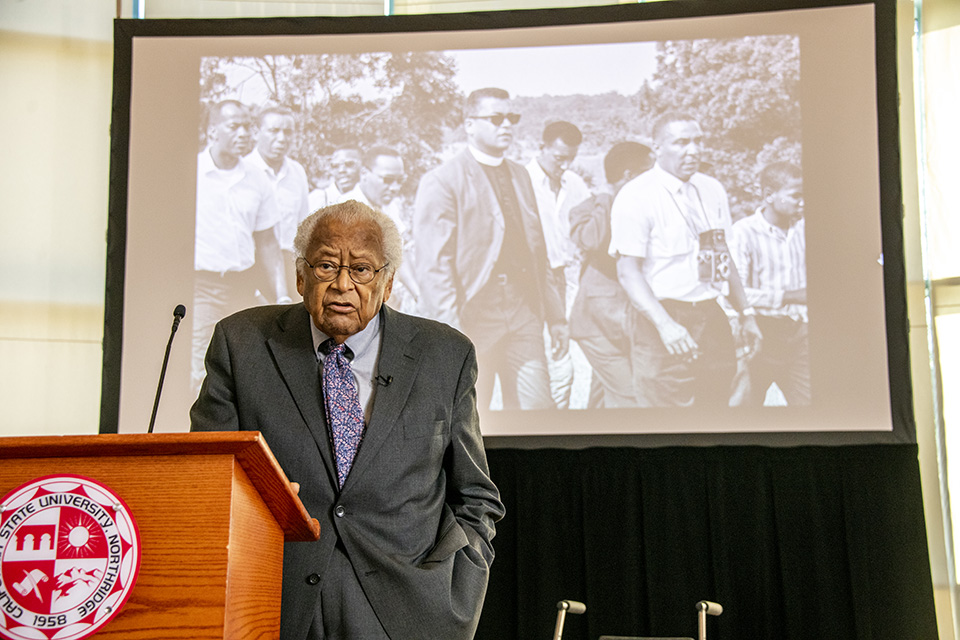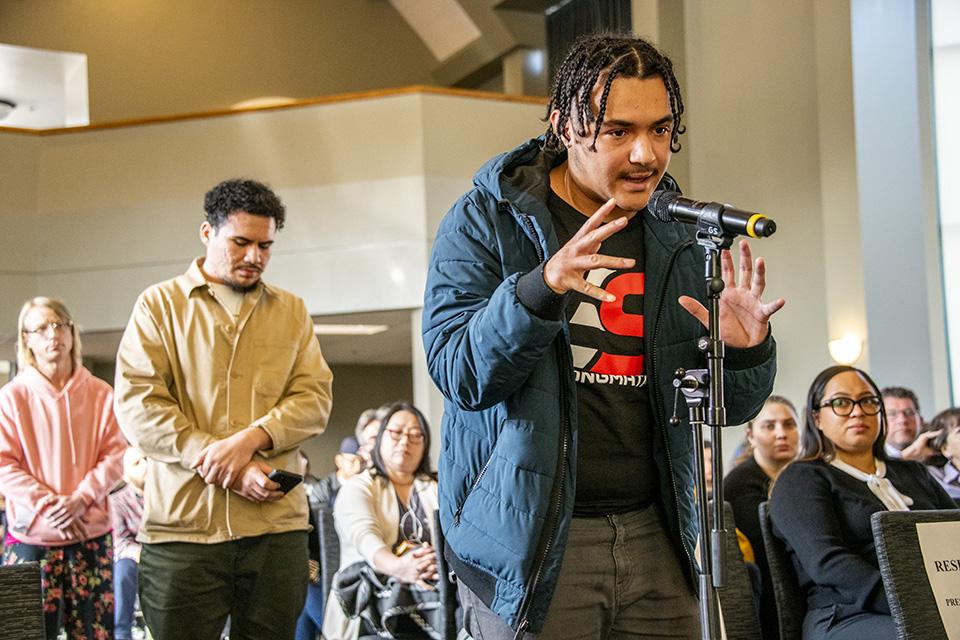Chaos or Community? Civil Rights Leader Lawson Encourages People to Pull Together
Making change through nonviolent protest has always been the way for civil rights leader, and longtime CSUN lecturer, the Rev. James M. Lawson Jr. On March 28, Lawson, who was recently named a Distinguished Scholar at CSUN, shared that philosophy and how it applies today with a large audience at the USU Grand Salon.
Lawson, who worked with Martin Luther King Jr. during the civil rights movement, spoke about the ongoing culture of violence in America and how it damages our ability to create community with others.
Students and faculty, along with CSUN President Erika D. Beck and other campus leaders, attended his talk, titled ‘Where Do We Go From Here: Chaos or Community?’ which was based on his recently published book “Revolutionary Nonviolence: Organizing for Freedom.”
“We, the people of the United States of America — we have become the most violent society in the history of the human race,” Lawson said. “[In part} because we think that violence is the power that brings changes.”
Lawson, who spoke a day after three children and three adults were killed in a shooting at a private school in Nashville. said that life should be seen as a precious gift, and showed how that view can bring a community together.
“Chaos is the way of disobedience to being alive,” he said. “Community is seizing hold of life and following its course. Violence results in people pulling away from each other, rather than being drawn to respect and serve each other.”
Near the end of the lecture, audience members were given a chance to ask Lawson questions. One student asked Lawson for ways to try to reach people who won’t listen to different views — or views that oppose their own beliefs.
“There is a nonviolent tactic that is very successful, Lawson said. “That nonviolent tactic is a face-to-face. A one-on-one. To go to the person and encourage them to have a large general conversation about life, about who they are and where they’re going… and be guided by a sense that this person is the human being who can be encouraged to move themselves in the direction of change.”
Lawson was first introduced to the philosophy of change through nonviolence while he was a college student. He followed the teachings of Mahatma Gandhi, the leader of the Indian independence movement. He became a colleague of Martin Luther King Jr. during the 1960’s and the fight for civil rights.
Lawson has taught on theories and practices of nonviolence at CSUN since 2010, as part of the Civil Discourse and Social Justice initiative. It is a program dedicated to promoting ideas of community involvement, as well as social and justice related activism in combination with education. Lawson’s work with the initiative includes workshops, courses and other public discussions. Currently he teaches the Civil Discourse and Social Justice upper division communication studies course in the Mike Curb College of Arts, Media, and Communication.



 experience
experience